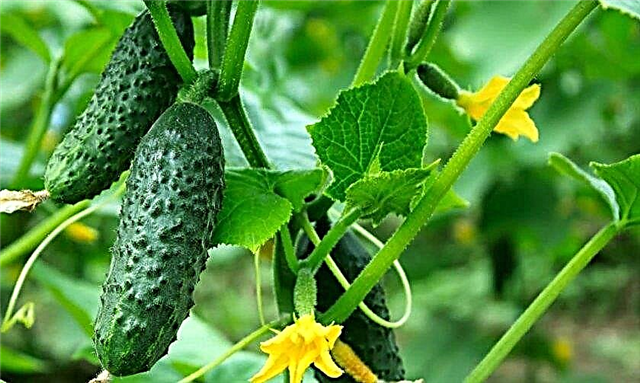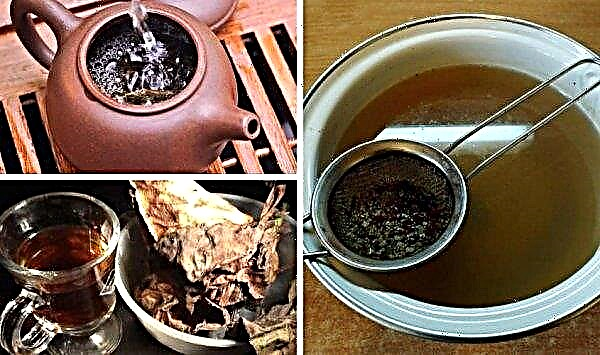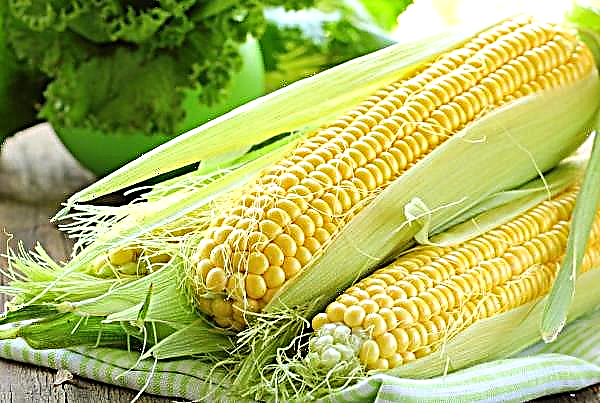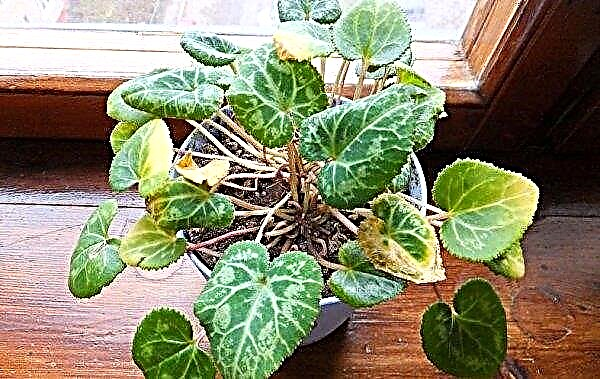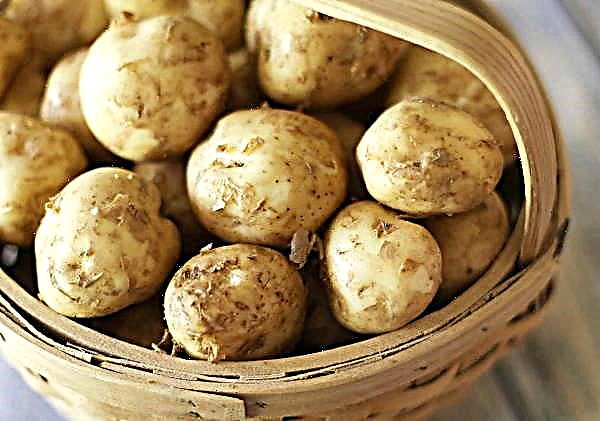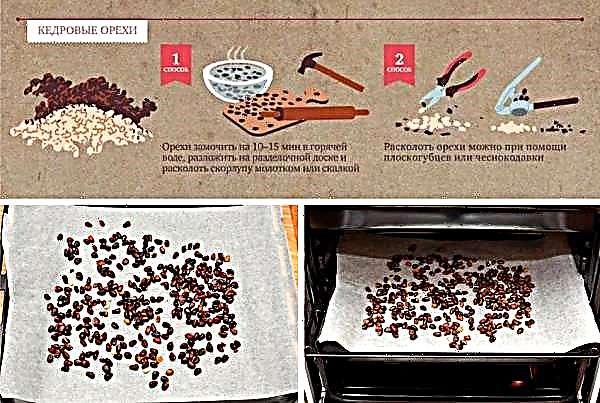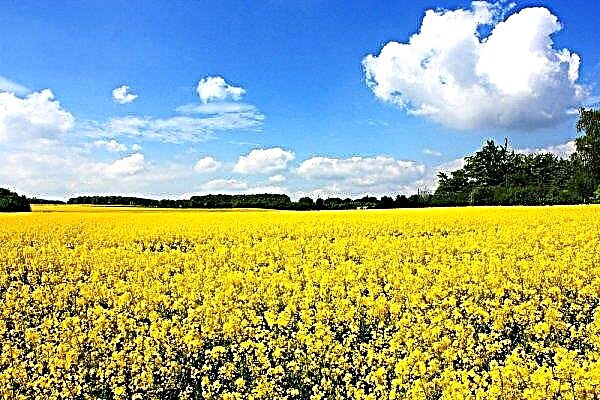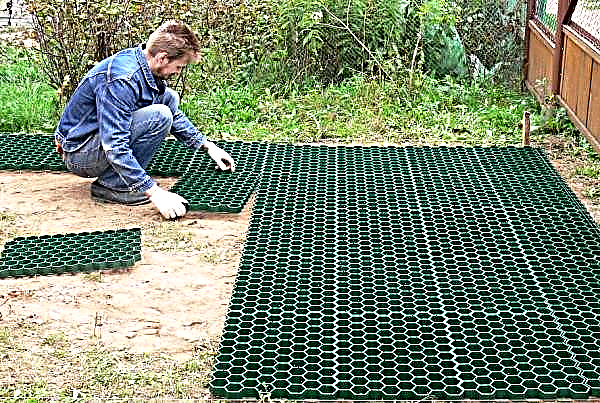Changing the color of leaves of cucumbers is not a rare phenomenon. Most often, this is evidence that the cultivation of the crop is carried out in violation of the favorable conditions for its growth or insufficient care is provided.
Why are the leaves of cucumbers pale: the main reasons
Various factors can influence the color of the leaves of cucumbers: lack of sunlight, low temperatures, excess or lack of nutrients, illness. To successfully cure a plant, you need to figure out what it lacks, find out the reason why it became sick, and only then proceed to correct the situation.
Did you know? The first greenhouses for growing cucumbers were built in ancient Rome for the emperor Tiberius, a great lover of this vegetable.
In the open ground
There are many reasons why the leaves of cucumbers in the open ground can change color, but the main ones are as follows:
- Sudden Frost Response or a significant fluctuation in daytime and nighttime temperatures.
- Inability by a plant to absorb beneficial trace elements due to a poorly developed root system.
- Soil depletion. Due to the poor supply of nutrients, plant growth is inhibited, leaves turn yellow. The upper leaves turn yellow - a lack of copper, the leaf turns yellow around the edges - a lack of potassium, the light green color of the leaf acquires a deficiency of magnesium, but the lack of manganese or iron is signaled by dark green veins on the icteric leaf.
- Lack of light. The cucumber bed most often resembles chaos: lashes of plants overlap each other, it is difficult for sunlight to penetrate to the lower leaves, and they brighten.

- Lack of moisture. Watering the cucumbers must be done at least 3 times a week, and on hot days - daily, deeply moistening the earth, otherwise the root of the cucumber will appear from under the ground in search of moisture, which will adversely affect the plant itself.
- Excess moisture. Due to excess moisture, root decay occurs, rot appears on the stems, the cucumber leaf turns yellow.
- Sunburn. If watering was carried out during the day and water splashed on the plant, then yellow specks indicate a sunburn. In order not to repeat this situation, water in the evening or in the morning.
- Pests. The most common pests are spider mites and whiteflies, they feed on plant juices, which leads to its death.
- Fungal diseases. Pitiosis, fusarium and other fungal diseases are most often the cause of yellowing - the tops are first affected, yellow-rusty spots appear on it, and then the leaf plate becomes infected.
- Densely planted plants.
- Old age.
Did you know? A piece of cucumber eaten before bedtime will help get rid of a headache.
In the greenhouse
The causes of yellowing of the leaves of cucumbers grown in the greenhouse are the same as those of plants in the open ground. In a greenhouse with high humidity, cucumber diseases are common, unless you strictly monitor the indicators of humidity and air temperature.
The most common diseases of cucumbers:
- Mosaic disease. The impetus for its development may be a sharp temperature drop, lack of light, lack of moisture in the soil. The disease is viral, affecting the fruits and leaves of the culture. It can be carried by insects, transmitted by seeds, and become infected from the contact of a diseased culture with a healthy plant. The stem of the infected plant is cracked, spots appear on the leaves, different in size and color, the leaf plate is deformed.

- Root rot. The plant is affected by this disease in rooms with high humidity, when planting the crop in cold, unheated soil, when irrigated with cold water. The disease begins with a basal zone, the lower leaves are the first to be affected, after - the whole plant.

- Powdery mildew. The fungus loves cloudy cool days, manifests itself in the form of a white coating on cucumber leaves, spreads by spores in the wind or irrigation water.
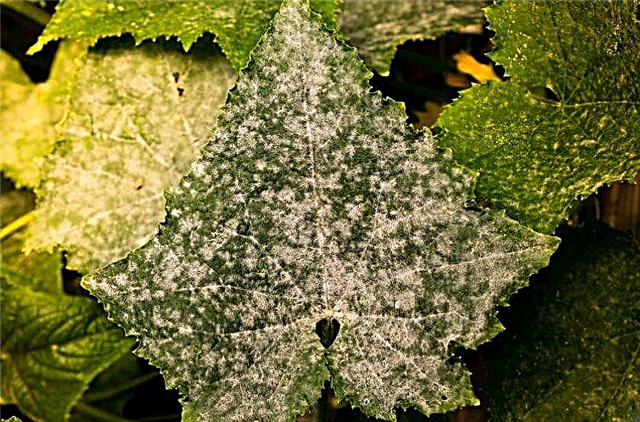
- Gray rot. A fungal disease that looks like brown spots on the leaves, the stem begins to rot, and wet spots form on the fruits. If the air humidity is increased in the greenhouse, a fluffy gray coating forms in the affected areas, in which the spores of the fungus multiply, and with the slightest draft, they scatter, infecting other plants that grow nearby.

- Fusarium. The sources of the disease include plant seeds and soil, the impetus for its development are sudden changes in temperature, high humidity or scarce lands. The manifestation of the disease occurs as follows: the lower leaves fade, watery edges form on the rest, the color changes - from green to pale green, light yellow. The stalk becomes thin. After some time, culture perishes.

What to do and how to feed cucumbers
To balance nutrient availability in soil, both organic and mineral fertilizers can be used.
Having knowledge of the type of soil and the necessary needs of cucumbers, you can choose two or three top dressings to support the plant:Important! If the infection of the culture occurred through the soil, then it is necessary to carry out work on the disinfection of the soil.
- Chicken Dung, Mullein - fertilizers with a high content of trace elements, ammonia and potassium. In order not to burn the root system of the plant, feeding on the basis of mullein (chicken droppings) must first be insisted. 1/3 mullein (chicken droppings) is poured with water for 7-10 days. Infusion is occasionally stirred. For feeding plants use 1 liter of mullein per 10 liters of water or 0.5 liters of chicken droppings per 10 liters of water. On one bush of cucumbers make 1 liter of fertilizer.
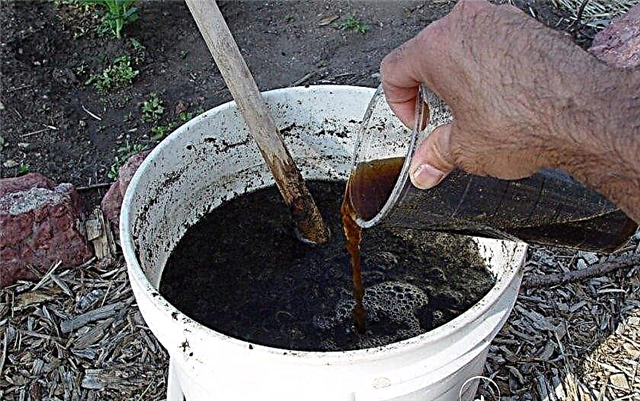
- Wood ash - an indispensable tool for deficiency of phosphorus and potassium, contains more than 30 types of trace elements. To prepare the ash solution, 300 g of ash must be diluted in 10 liters of water, insisted for three days. Watering is done under the root.

Fungal diseases do not like alkaline environments, so in the month of June it is advised to treat cucumbers with soda solution (1 tablespoon per 10 liters of water).
To combat harmful insects, use a decoction onion peel. A half-liter capacity of onion husks is poured with 7 liters of water, brought to a boil and left to infuse for 12 hours. The resulting broth is drained and diluted with water in a ratio of 1: 4. Cucumber culture, the top layer of the soil, is well treated with this solution.
Important! Nitrogen fertilizers and ash solution cannot be applied at the same time, as they neutralize each other. If ash has been irrigated, then spray the leaves with urea.
Preventative measures
To prevent the onset of the disease is better than treating it later, so do not neglect the prevention:
- Change the place under the cucumber bed, do not plant cucumbers on the same lands for several seasons in a row - the risk of contracting a fungus increases.
- Timely watering. When it is not possible to water according to the schedule, place straw, sawdust or mowed grass under cucumber roots, such a protective pillow will not allow moisture to evaporate quickly, and the root system of the plant will be provided with heat and additional nutrition.
- To protect plants from harmful bacteria and fungi, do not be afraid apply biological products, they do not carry danger to animals and people, but the growth and development of pathogens will be suppressed.
- Timely feed organic and mineral fertilizers.
